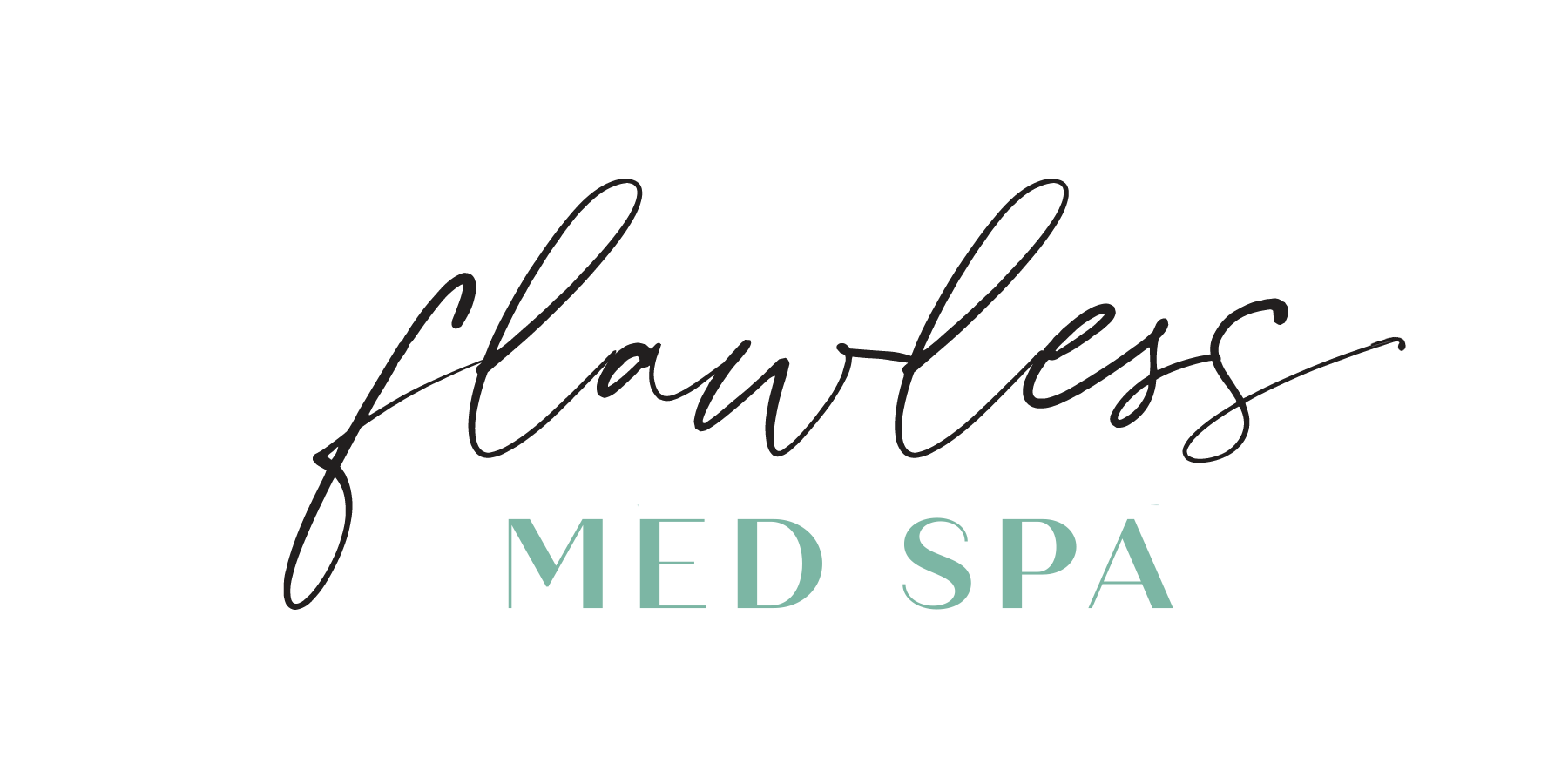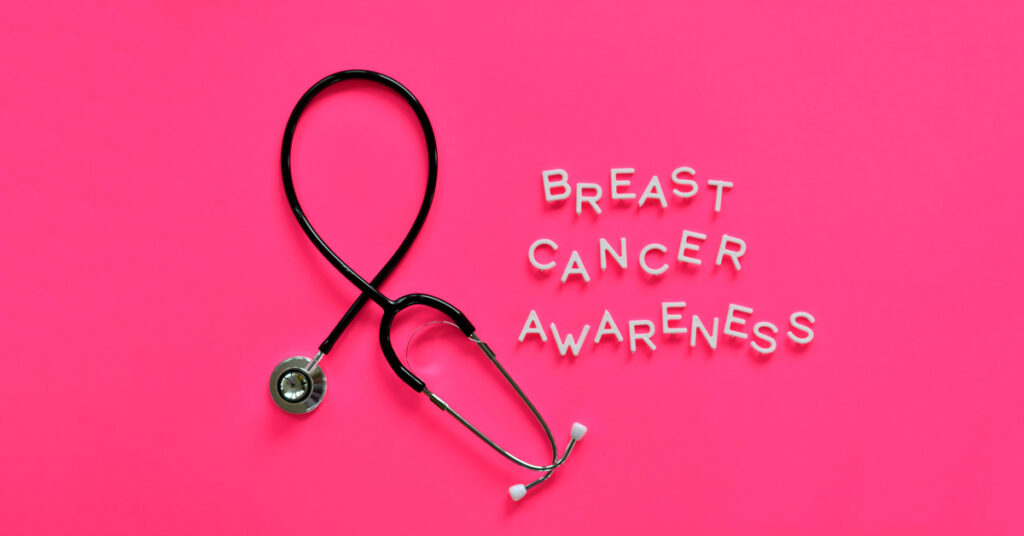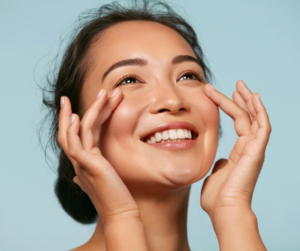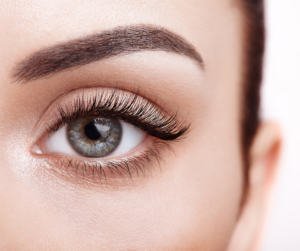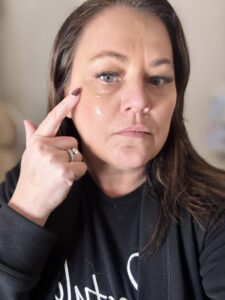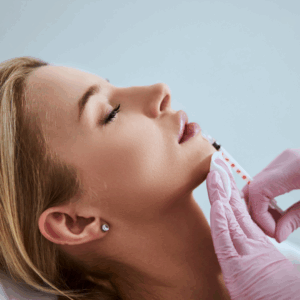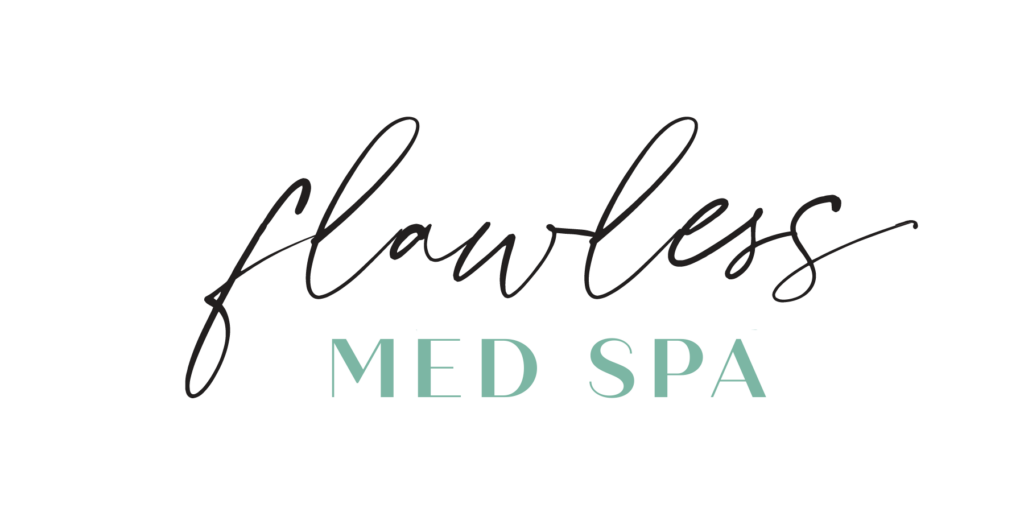It’s Breast Cancer Awareness month, and we’re here to help you learn how to do a breast self-exam. It sounds scary, but it’s easier than you think and will give you a sense of control over your health. Breast cancer affects 1 in 8 women¹, so all women need to know how to do a breast self-exam. While much more prominent in women, men also face a lifetime risk of breast cancer of 1 in 833¹. Doing this exam at home can help spot any changes or lumps that might need closer attention from your doctor. If there are any changes or lumps, call your doctor as soon as possible.
Breast cancer is the most common type of U.S. cancer in women, with more than 250,000 cases diagnosed each year and about 40 000 deaths annually, according to Breastcancer.org. People who do self-exams are often better able to find a lump or mass early enough for treatment before spreading too far. Self-examination of the breasts should occur regularly, usually once per month. You may feel nervous about it, but don’t worry – it’s easier than you think and will give you some sense of control over your health.
The Five Steps to Completing a Breast Self-Exam
 STEP 1: Begin in front of a mirror
STEP 1: Begin in front of a mirror
The first step is a visual check of yourself in a mirror. Face the mirror directly with your shoulders square to the mirror and look for any irregularities in your breasts’ shape, size, and color. Breasts should be evenly shaped without any visible swelling, discoloration, or distortion. You should consult your doctor if you notice any changes such as:
- abnormal bumps or bulges in the skin
- change in the position of a nipple
- an inverted nipple(sticking in, instead of out)
- redness, rash, or swelling
- soreness in the breast
 STEP 2: Lift your arms and repeat step 1. If any irregularities are noticed, consult your doctor.
STEP 2: Lift your arms and repeat step 1. If any irregularities are noticed, consult your doctor.
STEP 3: Check for any fluid excreting from one or both of your nipples. Any fluid, unless pregnant and nursing, is a cause for concern. Whether it’s clear or colored, milky or watery, you should contact your physician if you see any fluids coming from one or both nipples.
 STEP 4: Examine by touch. Lay down on your back and use your left hand to exam the right breast and vice-a-versa. Keep your fingers flat and together. Use a smooth but firm touch to examine each breast in a circular motion approximately the size of a quarter. Begin at the top left of the breast and work from side to side, top to bottom. You should start just below the shoulder, at the collarbone, and continue down to the top of your stomach. Make sure you check from your armpit to the center of your chest as you work your way down the breast. It’s essential that you do this in a systematic way to ensure you don’t miss any sections of the breast. One of the most effective methods is to work from top to bottom and left to right, ensuring you don’t miss any areas. As you complete the touch exam, you will need to pay attention to the skin and tissue underneath. You may adjust the level of pressure from light pressure to check the skin and medium pressure for the underlying tissue. Apply as much pressure as needed but be sure to apply enough pressure to check the deep tissue as well. You’ll know you’ve used the appropriate amount of pressure because you should feel your ribcage. If you don’t feel your ribcage, apply more pressure until you can. You are feeling for any abnormal lumps, especially hard lumps. If you notice anything abnormal, consult with your doctor.
STEP 4: Examine by touch. Lay down on your back and use your left hand to exam the right breast and vice-a-versa. Keep your fingers flat and together. Use a smooth but firm touch to examine each breast in a circular motion approximately the size of a quarter. Begin at the top left of the breast and work from side to side, top to bottom. You should start just below the shoulder, at the collarbone, and continue down to the top of your stomach. Make sure you check from your armpit to the center of your chest as you work your way down the breast. It’s essential that you do this in a systematic way to ensure you don’t miss any sections of the breast. One of the most effective methods is to work from top to bottom and left to right, ensuring you don’t miss any areas. As you complete the touch exam, you will need to pay attention to the skin and tissue underneath. You may adjust the level of pressure from light pressure to check the skin and medium pressure for the underlying tissue. Apply as much pressure as needed but be sure to apply enough pressure to check the deep tissue as well. You’ll know you’ve used the appropriate amount of pressure because you should feel your ribcage. If you don’t feel your ribcage, apply more pressure until you can. You are feeling for any abnormal lumps, especially hard lumps. If you notice anything abnormal, consult with your doctor.
 STEP 5: While sitting or standing, do the same touch exam you did while lying down. You may prefer to do this while in the shower as the water can act as a lubricant making the exam more comfortable. Just as in step 4, make sure to examine your entire breast from the armpit to the center of your chest and the collarbone down to the upper stomach. If you notice any irregularities, get them checked with your doctor.
STEP 5: While sitting or standing, do the same touch exam you did while lying down. You may prefer to do this while in the shower as the water can act as a lubricant making the exam more comfortable. Just as in step 4, make sure to examine your entire breast from the armpit to the center of your chest and the collarbone down to the upper stomach. If you notice any irregularities, get them checked with your doctor.
Doing a monthly breast self-exam is important as it makes it easier for you to identify any irregularities. The more familiar you are with your breasts, the easier to identify any areas of concern. If you find a lump or abnormality, don’t freak out. Most women have some areas that may be lumpy at all times, and not all lumps turn out to be cancerous. Injuries or hormonal changes can cause lumps to occur, so don’t jump to the worst-case scenario, take a deep breath and call your doctor. It’s important to note that sometimes the abnormality will disappear after a menstrual cycle if you discover something. If you notice a change and it doesn’t go away after a menstrual cycle, or the change worsens, schedule a visit to your physician. While you may think it’s an emergency and believe that going to the ER is the best option, that’s not the case. Whether it’s your primary care physician or gynecologist, it’s best to see a doctor that is familiar with you and has previously performed a breast exam on you.
If you need to visit a doctor, make sure that they answer your questions and provide a clear plan of action. It’s important to know what to expect and the plans to monitor or treat the issue. If you feel better getting a second opinion, then get one, it never hurts to err on the side of caution. Now that you know how to complete a breast self-exam, it is most important to do them regularly. So, take out your mobile phone if you’re not already reading this article on it, and put a recurring monthly event on your calendar to remind you to complete your monthly exam. We hope that you have found this article to be helpful and informative. At Flawless Medspa, we aim to help our clients live healthy, wholesome lives while maintaining their inner and outer beauty. If you enjoyed this article, we hope you will subscribe to our newsletter and come back to visit our blog frequently for informative tips to help you be the most beautiful you, both inside and out.
Sources:
¹ BreastCancer.org – US Breast Cancer Statistics
² BreastCancer.org – Breast Self-Exam
The Five Steps to Completing a Breast Self-Exam
 STEP 1: Begin in front of a mirror
The first step is a visual check of yourself in a mirror. Face the mirror directly with your shoulders square to the mirror and look for any irregularities in your breasts’ shape, size, and color. Breasts should be evenly shaped without any visible swelling, discoloration, or distortion. You should consult your doctor if you notice any changes such as:
STEP 1: Begin in front of a mirror
The first step is a visual check of yourself in a mirror. Face the mirror directly with your shoulders square to the mirror and look for any irregularities in your breasts’ shape, size, and color. Breasts should be evenly shaped without any visible swelling, discoloration, or distortion. You should consult your doctor if you notice any changes such as:
- abnormal bumps or bulges in the skin
- change in the position of a nipple
- an inverted nipple(sticking in, instead of out)
- redness, rash, or swelling
- soreness in the breast
 STEP 2: Lift your arms and repeat step 1. If any irregularities are noticed, consult your doctor.
STEP 3: Check for any fluid excreting from one or both of your nipples. Any fluid, unless pregnant and nursing, is a cause for concern. Whether it’s clear or colored, milky or watery, you should contact your physician if you see any fluids coming from one or both nipples.
STEP 2: Lift your arms and repeat step 1. If any irregularities are noticed, consult your doctor.
STEP 3: Check for any fluid excreting from one or both of your nipples. Any fluid, unless pregnant and nursing, is a cause for concern. Whether it’s clear or colored, milky or watery, you should contact your physician if you see any fluids coming from one or both nipples.
 STEP 4: Examine by touch. Lay down on your back and use your left hand to exam the right breast and vice-a-versa. Keep your fingers flat and together. Use a smooth but firm touch to examine each breast in a circular motion approximately the size of a quarter. Begin at the top left of the breast and work from side to side, top to bottom. You should start just below the shoulder, at the collarbone, and continue down to the top of your stomach. Make sure you check from your armpit to the center of your chest as you work your way down the breast. It’s essential that you do this in a systematic way to ensure you don’t miss any sections of the breast. One of the most effective methods is to work from top to bottom and left to right, ensuring you don’t miss any areas. As you complete the touch exam, you will need to pay attention to the skin and tissue underneath. You may adjust the level of pressure from light pressure to check the skin and medium pressure for the underlying tissue. Apply as much pressure as needed but be sure to apply enough pressure to check the deep tissue as well. You’ll know you’ve used the appropriate amount of pressure because you should feel your ribcage. If you don’t feel your ribcage, apply more pressure until you can. You are feeling for any abnormal lumps, especially hard lumps. If you notice anything abnormal, consult with your doctor.
STEP 4: Examine by touch. Lay down on your back and use your left hand to exam the right breast and vice-a-versa. Keep your fingers flat and together. Use a smooth but firm touch to examine each breast in a circular motion approximately the size of a quarter. Begin at the top left of the breast and work from side to side, top to bottom. You should start just below the shoulder, at the collarbone, and continue down to the top of your stomach. Make sure you check from your armpit to the center of your chest as you work your way down the breast. It’s essential that you do this in a systematic way to ensure you don’t miss any sections of the breast. One of the most effective methods is to work from top to bottom and left to right, ensuring you don’t miss any areas. As you complete the touch exam, you will need to pay attention to the skin and tissue underneath. You may adjust the level of pressure from light pressure to check the skin and medium pressure for the underlying tissue. Apply as much pressure as needed but be sure to apply enough pressure to check the deep tissue as well. You’ll know you’ve used the appropriate amount of pressure because you should feel your ribcage. If you don’t feel your ribcage, apply more pressure until you can. You are feeling for any abnormal lumps, especially hard lumps. If you notice anything abnormal, consult with your doctor.
 STEP 5: While sitting or standing, do the same touch exam you did while lying down. You may prefer to do this while in the shower as the water can act as a lubricant making the exam more comfortable. Just as in step 4, make sure to examine your entire breast from the armpit to the center of your chest and the collarbone down to the upper stomach. If you notice any irregularities, get them checked with your doctor.
Doing a monthly breast self-exam is important as it makes it easier for you to identify any irregularities. The more familiar you are with your breasts, the easier to identify any areas of concern. If you find a lump or abnormality, don’t freak out. Most women have some areas that may be lumpy at all times, and not all lumps turn out to be cancerous. Injuries or hormonal changes can cause lumps to occur, so don’t jump to the worst-case scenario, take a deep breath and call your doctor. It’s important to note that sometimes the abnormality will disappear after a menstrual cycle if you discover something. If you notice a change and it doesn’t go away after a menstrual cycle, or the change worsens, schedule a visit to your physician. While you may think it’s an emergency and believe that going to the ER is the best option, that’s not the case. Whether it’s your primary care physician or gynecologist, it’s best to see a doctor that is familiar with you and has previously performed a breast exam on you.
If you need to visit a doctor, make sure that they answer your questions and provide a clear plan of action. It’s important to know what to expect and the plans to monitor or treat the issue. If you feel better getting a second opinion, then get one, it never hurts to err on the side of caution. Now that you know how to complete a breast self-exam, it is most important to do them regularly. So, take out your mobile phone if you’re not already reading this article on it, and put a recurring monthly event on your calendar to remind you to complete your monthly exam. We hope that you have found this article to be helpful and informative. At Flawless Medspa, we aim to help our clients live healthy, wholesome lives while maintaining their inner and outer beauty. If you enjoyed this article, we hope you will subscribe to our newsletter and come back to visit our blog frequently for informative tips to help you be the most beautiful you, both inside and out.
Sources:
¹ BreastCancer.org – US Breast Cancer Statistics
² BreastCancer.org – Breast Self-Exam“]It’s Breast Cancer Awareness month, and we’re here to help you learn how to do a breast self-exam. It sounds scary, but it’s easier than you think and will give you a sense of control over your health. Breast cancer affects 1 in 8 women¹, so all women need to know how to do a breast self-exam. While much more prominent in women, men also face a lifetime risk of breast cancer of 1 in 833¹. Doing this exam at home can help spot any changes or lumps that might need closer attention from your doctor. If there are any changes or lumps, call your doctor as soon as possible.
Breast cancer is the most common type of U.S. cancer in women, with more than 250,000 cases diagnosed each year and about 40 000 deaths annually, according to Breastcancer.org. People who do self-exams are often better able to find a lump or mass early enough for treatment before spreading too far. Self-examination of the breasts should occur regularly, usually once per month. You may feel nervous about it, but don’t worry – it’s easier than you think and will give you some sense of control over your health.
STEP 5: While sitting or standing, do the same touch exam you did while lying down. You may prefer to do this while in the shower as the water can act as a lubricant making the exam more comfortable. Just as in step 4, make sure to examine your entire breast from the armpit to the center of your chest and the collarbone down to the upper stomach. If you notice any irregularities, get them checked with your doctor.
Doing a monthly breast self-exam is important as it makes it easier for you to identify any irregularities. The more familiar you are with your breasts, the easier to identify any areas of concern. If you find a lump or abnormality, don’t freak out. Most women have some areas that may be lumpy at all times, and not all lumps turn out to be cancerous. Injuries or hormonal changes can cause lumps to occur, so don’t jump to the worst-case scenario, take a deep breath and call your doctor. It’s important to note that sometimes the abnormality will disappear after a menstrual cycle if you discover something. If you notice a change and it doesn’t go away after a menstrual cycle, or the change worsens, schedule a visit to your physician. While you may think it’s an emergency and believe that going to the ER is the best option, that’s not the case. Whether it’s your primary care physician or gynecologist, it’s best to see a doctor that is familiar with you and has previously performed a breast exam on you.
If you need to visit a doctor, make sure that they answer your questions and provide a clear plan of action. It’s important to know what to expect and the plans to monitor or treat the issue. If you feel better getting a second opinion, then get one, it never hurts to err on the side of caution. Now that you know how to complete a breast self-exam, it is most important to do them regularly. So, take out your mobile phone if you’re not already reading this article on it, and put a recurring monthly event on your calendar to remind you to complete your monthly exam. We hope that you have found this article to be helpful and informative. At Flawless Medspa, we aim to help our clients live healthy, wholesome lives while maintaining their inner and outer beauty. If you enjoyed this article, we hope you will subscribe to our newsletter and come back to visit our blog frequently for informative tips to help you be the most beautiful you, both inside and out.
Sources:
¹ BreastCancer.org – US Breast Cancer Statistics
² BreastCancer.org – Breast Self-Exam“]It’s Breast Cancer Awareness month, and we’re here to help you learn how to do a breast self-exam. It sounds scary, but it’s easier than you think and will give you a sense of control over your health. Breast cancer affects 1 in 8 women¹, so all women need to know how to do a breast self-exam. While much more prominent in women, men also face a lifetime risk of breast cancer of 1 in 833¹. Doing this exam at home can help spot any changes or lumps that might need closer attention from your doctor. If there are any changes or lumps, call your doctor as soon as possible.
Breast cancer is the most common type of U.S. cancer in women, with more than 250,000 cases diagnosed each year and about 40 000 deaths annually, according to Breastcancer.org. People who do self-exams are often better able to find a lump or mass early enough for treatment before spreading too far. Self-examination of the breasts should occur regularly, usually once per month. You may feel nervous about it, but don’t worry – it’s easier than you think and will give you some sense of control over your health.
The Five Steps to Completing a Breast Self-Exam
 STEP 1: Begin in front of a mirror
The first step is a visual check of yourself in a mirror. Face the mirror directly with your shoulders square to the mirror and look for any irregularities in your breasts’ shape, size, and color. Breasts should be evenly shaped without any visible swelling, discoloration, or distortion. You should consult your doctor if you notice any changes such as:
STEP 1: Begin in front of a mirror
The first step is a visual check of yourself in a mirror. Face the mirror directly with your shoulders square to the mirror and look for any irregularities in your breasts’ shape, size, and color. Breasts should be evenly shaped without any visible swelling, discoloration, or distortion. You should consult your doctor if you notice any changes such as:
- abnormal bumps or bulges in the skin
- change in the position of a nipple
- an inverted nipple(sticking in, instead of out)
- redness, rash, or swelling
- soreness in the breast
 STEP 2: Lift your arms and repeat step 1. If any irregularities are noticed, consult your doctor.
STEP 2: Lift your arms and repeat step 1. If any irregularities are noticed, consult your doctor.
STEP 3: Check for any fluid excreting from one or both of your nipples. Any fluid, unless pregnant and nursing, is a cause for concern. Whether it’s clear or colored, milky or watery, you should contact your physician if you see any fluids coming from one or both nipples.
 STEP 4: Examine by touch. Lay down on your back and use your left hand to exam the right breast and vice-a-versa. Keep your fingers flat and together. Use a smooth but firm touch to examine each breast in a circular motion approximately the size of a quarter. Begin at the top left of the breast and work from side to side, top to bottom. You should start just below the shoulder, at the collarbone, and continue down to the top of your stomach. Make sure you check from your armpit to the center of your chest as you work your way down the breast. It’s essential that you do this in a systematic way to ensure you don’t miss any sections of the breast. One of the most effective methods is to work from top to bottom and left to right, ensuring you don’t miss any areas. As you complete the touch exam, you will need to pay attention to the skin and tissue underneath. You may adjust the level of pressure from light pressure to check the skin and medium pressure for the underlying tissue. Apply as much pressure as needed but be sure to apply enough pressure to check the deep tissue as well. You’ll know you’ve used the appropriate amount of pressure because you should feel your ribcage. If you don’t feel your ribcage, apply more pressure until you can. You are feeling for any abnormal lumps, especially hard lumps. If you notice anything abnormal, consult with your doctor.
STEP 4: Examine by touch. Lay down on your back and use your left hand to exam the right breast and vice-a-versa. Keep your fingers flat and together. Use a smooth but firm touch to examine each breast in a circular motion approximately the size of a quarter. Begin at the top left of the breast and work from side to side, top to bottom. You should start just below the shoulder, at the collarbone, and continue down to the top of your stomach. Make sure you check from your armpit to the center of your chest as you work your way down the breast. It’s essential that you do this in a systematic way to ensure you don’t miss any sections of the breast. One of the most effective methods is to work from top to bottom and left to right, ensuring you don’t miss any areas. As you complete the touch exam, you will need to pay attention to the skin and tissue underneath. You may adjust the level of pressure from light pressure to check the skin and medium pressure for the underlying tissue. Apply as much pressure as needed but be sure to apply enough pressure to check the deep tissue as well. You’ll know you’ve used the appropriate amount of pressure because you should feel your ribcage. If you don’t feel your ribcage, apply more pressure until you can. You are feeling for any abnormal lumps, especially hard lumps. If you notice anything abnormal, consult with your doctor.
 STEP 5: While sitting or standing, do the same touch exam you did while lying down. You may prefer to do this while in the shower as the water can act as a lubricant making the exam more comfortable. Just as in step 4, make sure to examine your entire breast from the armpit to the center of your chest and the collarbone down to the upper stomach. If you notice any irregularities, get them checked with your doctor.
STEP 5: While sitting or standing, do the same touch exam you did while lying down. You may prefer to do this while in the shower as the water can act as a lubricant making the exam more comfortable. Just as in step 4, make sure to examine your entire breast from the armpit to the center of your chest and the collarbone down to the upper stomach. If you notice any irregularities, get them checked with your doctor.
